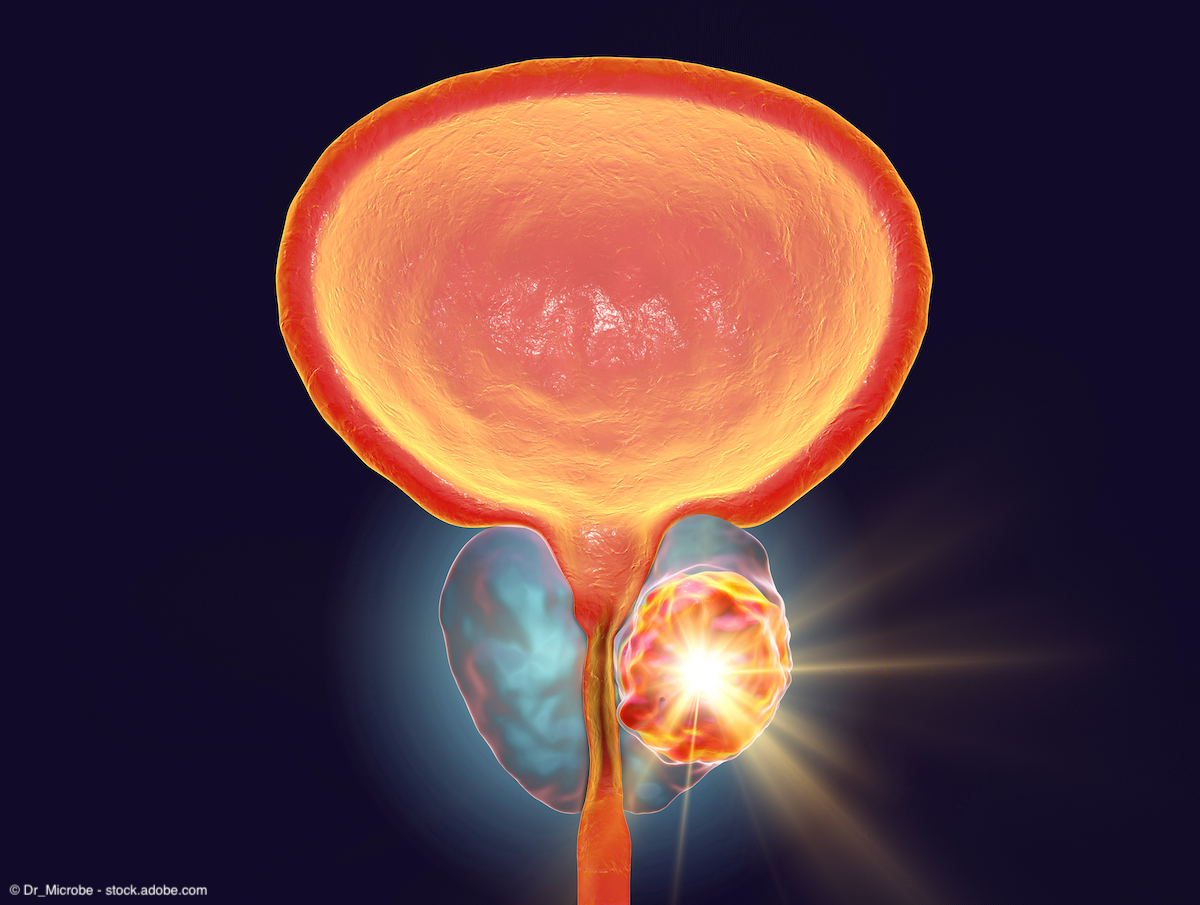Article
Enzalutamide shown to improve overall survival in hormone-sensitive prostate cancer
Author(s):
Patients received standard-of-care testosterone suppression with either oral enzalutamide or standard non-steroidal antiandrogen therapy.
An analysis of findings from the ENZAMET trial (NCT02446405) showed that adding enzalutamide (Xtandi) to standard testosterone suppression led to a sustained improvement in overall survival (OS) in the treatment of patients with hormone-sensitive prostate cancer.1 The trial was led by investigators at the South Australian immunoGENomics Cancer Institute at the University of Adelaide.
The primary end point of 5-year OS in the control group was 57%, compared with 67% in the group receiving enzalutamide.

“The longer-term analysis showed that the benefit of adding enzalutamide was evident in all patient subgroups, regardless of when the cancer was found to have spread, or how much was present, or whether people also received docetaxel chemotherapy,” said lead author of the study, Professor Christopher Sweeney, in a news release on the findings.2 Sweeney is the director of the immunoGENomics Cancer Institute.
In the study, patients were randomly assigned 1:1 to receive standard-of-care testosterone suppression with either oral enzalutamide (160 mg once daily) (n=563) or to a control group receiving a weaker standard oral non-steroidal antiandrogen (bicalutamide, nilutamide, or flutamide) (n=562) until clinical disease progression or prohibitive toxicity. Participants were able to receive testosterone suppression up to 12 weeks before randomization and up to 24 months as an adjuvant therapy. Concurrent docetaxel was allowed for up to 6 cycles once every 3 weeks as needed.
The primary end point of the study was OS. Secondary end points included prostate-specific antigen (PSA) progression-free survival and clinical progression-free survival.
Data showed that the primary end point of 5-year OS in the control group was 57%, compared with 67% in the group receiving enzalutamide. The secondary end point of PSA progression-free survival was 25% in the control group compared with 54% in the enzalutamide group. Clinical progression-free survival at 5-year follow-up was 28% in the control group and 56% in the enzalutamide group. The results for enzalutamide were not found to be statistically different among all prognostic subgroups (synchronous or metachronous presentation with high-volume of low-volume disease).
There was a consistent beneficial effect of use of concurrent docetaxel on OS in patients with synchronous disease, but not metachronous disease. PSA progression-free survival and clinical progression-free survival benefits were durable in all subgroups with or without concurrent docetaxel treatment.
Of total participants, 5% stopped treatment due to treatment-related adverse events in the control group, compared with 11% in the group receiving enzalutamide.
The ENZAMET trial is expected to reach completion in December 2024.
References
1. Sweeney CJ, Marin AJ, Stockler MR, et al. Testosterone suppression plus enzalutamide versus testosterone suppression plus standard antiandrogen therapy for metastatic hormone-sensitive prostate cancer (ENZAMET): an international, open-label, randomized, phase 3 trial. Lancet Oncol. 2023;24(4):323-334. doi:10.1016/S1470-2045(23)00063-3.
2. ENZAMET shows promise as prostate cancer treatment. University of Adelaide. March 30, 2023. Accessed March 30, 2023. https://www.newswise.com/articles/enzamet-shows-promise-as-prostate-cancer-treatment?sc=mwhr&xy=10016681














